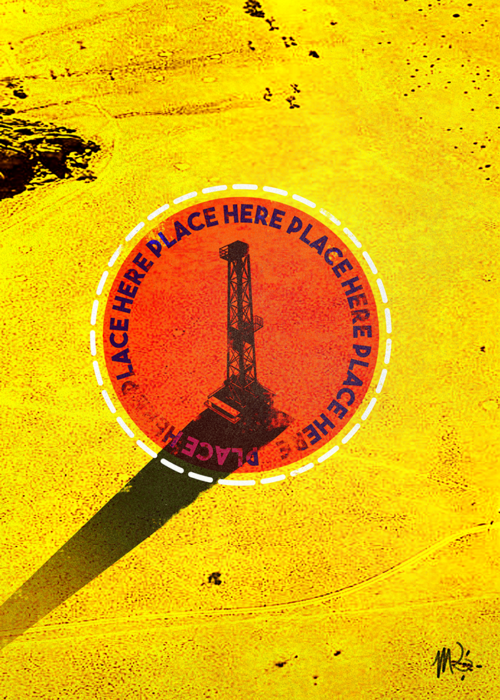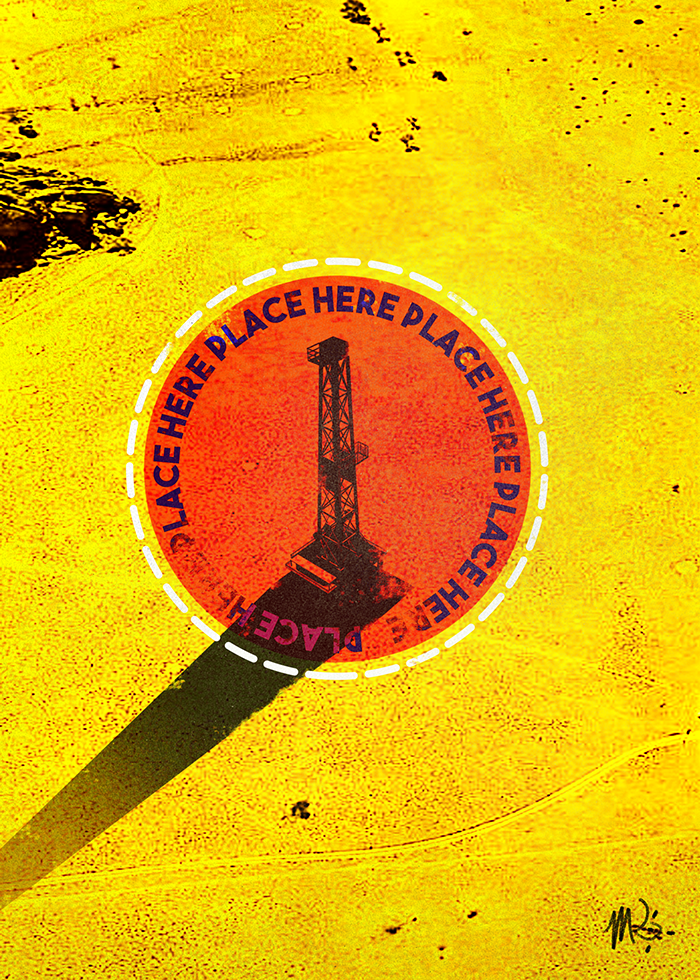
Take it from conservationists around the West, and the Bureau of Land Management is on a “reckless” streak of oil and gas leasing. In Wyoming, a September lease sale of 264,000 acres continued “a pattern of reckless leasing,” John Rader, conservation advocate for the Wyoming Outdoor Council, told the Casper Star-Tribune. “They are offering hundreds of thousands of acres of public land for oil and gas development in important wildlife habitat.”
One month later, Clare Lakewood of the Center for Biological Diversity had choice words about the Trump administration’s plan to put 725,000 acres up for lease in California. “This reckless move is the toxic convergence of Trump’s climate denial, loyalty to the oil industry and grudge against California,” she said in a statement.
President Donald Trump’s environmental track record is bleak, and many conservationists lump oil and gas leases in the same pile as his administration’s withering endangered species protection and attacks on climate science. But lease issuances, while increasing under this administration, remain near historic lows, and the total amount of leased acreage continues to fall. What’s really at issue, then, isn’t the volume of leases, but rather the administration’s tendency to offer up land near sensitive habitat or cultural zones.
“If this stuff is occurring next to wilderness areas or national park units, and the activity can be seen, or it’s producing air and water pollution and it’s affecting wildlife habitat, then yeah, people should be concerned about that,” said John Freemuth, a public policy professor at Boise State University.
Interior’s leasing has received immense scrutiny, but the acreage controlled by oil and gas remains on a downward trajectory. “Since 1985, this is the lowest amount of leasing — period,” said Kathleen Sgamma, executive director of the Western Energy Alliance. Hydraulic fracturing and horizontal drilling allow oil and gas producers to tap into more black gold while utilizing less surface space; a single well can siphon oil from a far broader subterranean zone. Indeed, the acreage of public lands under lease in 2018 — the latest available data from BLM — is down 44 percent from 2009, during which period U.S. crude oil production on federal land increased about 20 percent. The amount of leased land has fallen every year during both the Obama and Trump administrations.
Trump’s BLM has, however, been speedier with issuing drilling permits. According to Interior, the Obama administration took an average of 257 days to process drilling permits; under Trump, that has fallen to 108 days. The Trump administration in 2018 still approved fewer permits than Obama’s Interior department did every year prior to 2016.
Prior to a lease sale, companies nominate parcels — they can do so anonymously — to be sold at auctions held quarterly by state BLM offices. After BLM approves a parcel, bids start at $2 per acre; if nobody submits a bid, the lease can be scooped up after auction for $1.50 per acre, which is the annual rental rate BLM charges. According to a recent analysis by The Wilderness Society and the Center for Western Priorities, 32 percent of the 17.7 million acres of Western oil-and-gas leases active in August were acquired for $2 an acre or less. Once a company holds a lease, it has 10 years to drill; the lease can be renewed into perpetuity so long as the well is producing.
It’s important to note that a leased parcel is not the same as one producing oil or gas. During fiscal 2018, just half the 25.6 million acres under lease were active drilling sites. The rest were sitting idle, which, depending on whom you ask, is a sign either that the leasing system is working effectively or that it is locking up public land for the benefit of oil-and-gas firms.
Sgamma said the 10-year lease terms give companies needed time to conduct exploratory drilling, finish environmental reviews, and do all the other things necessary to comply with federal guidelines. And until a drill rig is erected, public access isn’t affected. “Lots of leases are used for ranching and recreation,” she said. “You wouldn’t know it, walking through BLM, what’s leased and what’s not.”
Access isn’t what has environmental groups concerned, though. Kim Stevens, a campaign representative with The Wilderness Society, said any oil-and-gas lease locks up BLM’s ability to manage that parcel for long-term conservation goals. A previous Wilderness Society analysis found that just 10 percent of BLM land is prioritized for conservation, recreation, or other non-extractive uses.
“The scale to which leases are sitting idle means that really important and large swaths of land are not able to be proactively managed for anything else,” she told me. “There’s no ability to be forward thinking and make sure that land managers are considering other really important values, like wildlife or recreation.”
Public outcry led Interior in February to cancel a planned lease of parcels near Chaco Culture National Historical Park, the New Mexico park that hosts an incredible concentration of ancestral Pueblo artifacts and dwellings. (The House of Representatives passed a bill this week that would establish a 10-mile development buffer around Chaco.) But other controversial sales have proceeded near areas of environmental and cultural significance, locations where previous administrations tried not to lease land. A report commissioned by the Audubon Society, for example, found that 27 percent of leases made by the Trump administration in the six Western states with robust sage-grouse habitat overlapped with the imperiled bird’s priority areas. (A district court recently blocked the Trump administration’s rollback of sage-grouse protection.) Another analysis found that 18 percent of leases offered up by the Trump administration in five Western states fall in critical migration corridors for deer, elk, and pronghorn.
Sgamma told me concern over leases in these areas belies the regulations producers must deal with on federal land. In areas of cultural sensitivity, a company might have to conduct an archaeological survey before drilling, and rigs in wildlife habitat have more restrictions on visual disturbances, noise, and waste disposal. But research has found that oil and gas development, no matter how carefully done, does have adverse effects on animals in the neighborhood. Enforcement of bad actors is scant, too — thousands of orphaned wells sit unremediated on public land after drillers have picked up and left.
Other federal agencies, the National Park Service in particular, have in the past served as a safeguard to ill-placed leasing. But in September, the Park Service issued a policy that superintendents must clear any critiques of proposed activity on adjacent public land with political appointees in Washington, D.C., before submitting them — a move advocates said will quash its ability to keep BLM leasing in check.
To Jesse Prentice-Dunn, policy director at the Center for Western Priorities, all this is an environmental and financial boondoggle. “Set aside the whole argument for diversifying our energy system so we don’t have to rely on oil,” he said. “Having all these idle leases shows just how cheap it is to speculate on our public lands. … Prices are too cheap, and taxpayers are getting ripped off.”
In their report, CWP and The Wilderness Society called for the minimum bid on leases to be raised from $2 to $10, and for royalty rates on oil to be raised from the current 12.5 percent to something closer to the 25 percent Texas charges on state land.
Do that, Sgamma said, and you can kiss a lot of domestic oil and gas production goodbye — and the $2.72 billion in royalties it generated in fiscal 2019. But to those who consider all these leases reckless, curbing production might be the exact goal they have in mind.

